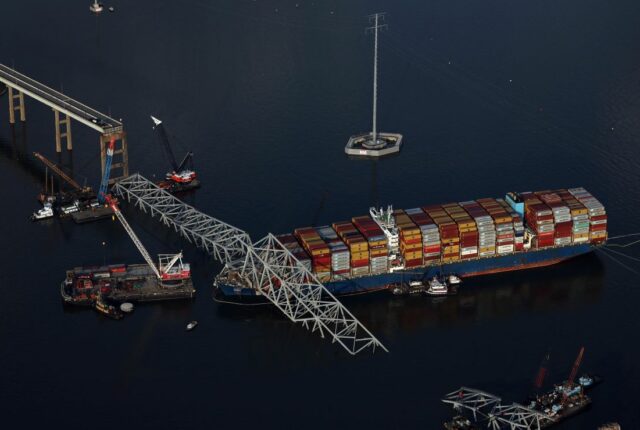
On Track for Success: Strategies for Efficient Rail Freight Planning
Rail freight planning is a critical aspect of logistics, playing a pivotal role in the transportation of goods across vast distances. Efficient planning not only ensures timely delivery but also contributes to cost savings and environmental sustainability. In this article, we delve into the strategies that can propel rail freight planning towards success.
Rail freight planning involves the coordination and optimization of resources to facilitate the smooth movement of goods by train. This mode of transportation has gained prominence due to its efficiency and ability to handle large volumes of cargo. In the following sections, we explore the importance of efficient rail freight planning, the challenges it faces, and innovative strategies to overcome them.
Importance of Efficient Rail Freight Planning
Cost-effectiveness
One of the primary advantages of rail freight planning is its cost-effectiveness. Compared to other modes of transportation, such as road or air, trains can carry larger loads at a lower cost per ton-mile. This makes it an attractive option for businesses aiming to optimize their logistics expenses.
Environmental Benefits
Efficient rail freight planning aligns with environmental sustainability goals. Trains are inherently more fuel-efficient and produce fewer emissions per ton of cargo transported compared to trucks or planes. Choosing rail over other modes of transport contributes to reducing the carbon footprint of logistics operations.
Reliability and Punctuality
Rail transport offers reliability and punctuality, crucial factors in the logistics industry. By adhering to a well-structured plan, trains can operate on schedule, ensuring timely deliveries and minimizing disruptions in the supply chain.
Challenges in Rail Freight Planning
Infrastructure Limitations
Despite its advantages, rail freight planning faces challenges related to infrastructure. In some regions, outdated rail networks and insufficient connectivity hinder the seamless flow of goods. Investment in modernizing and expanding rail infrastructure is essential to overcome this challenge.
Regulatory Hurdles
Complex regulations governing rail transportation pose a hurdle to efficient planning. Streamlining and simplifying regulatory processes can enhance the agility of rail freight operations, promoting smoother logistics management.
Technological Constraints
Outdated technology can impede the efficiency of rail freight planning. Embracing advanced technologies, such as AI and data analytics, can revolutionize the industry by providing real-time insights and enabling predictive maintenance.
Strategies for Overcoming Challenges
Infrastructure Development
Investing in the expansion and modernization of rail infrastructure is paramount. Governments and private entities should collaborate to fund projects that enhance connectivity, reduce bottlenecks, and improve the overall efficiency of rail networks.
Collaboration and Regulatory Reforms
Promoting collaboration between stakeholders and advocating for regulatory reforms can streamline processes and remove unnecessary bureaucratic obstacles. A cooperative approach ensures a more agile and responsive rail freight system.
Technological Advancements
Integration of cutting-edge technologies is crucial for overcoming technological constraints. Implementing IoT devices for monitoring cargo conditions, predictive analytics for maintenance, and automation for smoother operations can significantly enhance efficiency.
Data-Driven Decision Making
In the era of digital transformation, data plays a pivotal role in decision-making. Rail freight planners should leverage data analytics to gain insights into demand patterns, optimize routes, and improve overall operational efficiency.
Importance of Data in Planning
Data-driven decision-making relies on gathering and analyzing relevant information. This includes historical transport data, market trends, and real-time operational data, enabling planners to make informed choices.
Integration of Technology for Real-time Data
The integration of technology, such as GPS tracking and IoT devices, provides real-time data on the location and condition of goods. This allows for proactive decision-making, reducing the risk of delays and improving overall reliability.
Sustainability in Rail Freight
Green Initiatives
Sustainability is a growing concern globally, and the rail freight industry is no exception. Green initiatives, such as using renewable energy sources, investing in energy-efficient technologies, and adopting eco-friendly practices, contribute to a more sustainable future.
Adoption of Eco-friendly Technologies
The adoption of eco-friendly technologies, including electric and hybrid locomotives, can significantly reduce the environmental impact of rail freight operations. Governments and businesses should prioritize and incentivize the use of such technologies.
Collaboration in the Rail Freight Industry
Public-Private Partnerships
Collaboration between public and private entities is essential for fostering innovation and addressing challenges in rail freight planning. Public-private partnerships can lead to shared investments, improved infrastructure, and streamlined regulatory processes.
Networking and Alliances
Building networks and alliances within the rail freight industry promotes knowledge sharing and resource optimization. Collaborative efforts can result in joint ventures, allowing for more comprehensive and efficient logistics solutions.
Future Trends in Rail Freight Planning
Automation and AI
The future of rail freight planning is closely tied to automation and artificial intelligence. Implementing autonomous trains, predictive analytics, and AI-driven decision-making processes can enhance efficiency and reduce human error.
Sustainable Innovations
Ongoing research and development in sustainable innovations will shape the future of rail freight planning. From lightweight materials to energy-efficient technologies, embracing sustainable practices is essential for long-term success.
Benefits for Businesses and the Environment
Economic Advantages
Businesses stand to gain economically from efficient rail freight planning. Cost savings, improved reliability, and reduced environmental impact contribute to the overall economic sustainability of companies utilizing rail transportation.
Reduced Carbon Footprint
Choosing rail over other transport modes inherently reduces the carbon footprint of logistics operations. This environmental benefit aligns with global initiatives to combat climate change, making rail freight a responsible choice.
Challenges and Opportunities in Implementation
Overcoming Resistance to Change
Implementing new strategies often faces resistance from traditional practices. Overcoming this resistance through effective communication, training, and showcasing the benefits is crucial for successful implementation.
Seizing Opportunities for Growth
Efficient rail freight operations opens doors to new opportunities for growth. Businesses should actively seek and capitalize on these opportunities, whether it’s expanding market reach, optimizing supply chains, or exploring new partnerships.
Ensuring Safety in Rail Freight Operations
Technology for Safety Measures
Safety is paramount in rail freight operations. Embracing advanced safety technologies, such as collision avoidance systems and real-time monitoring, ensures a secure and reliable transportation system.
Training Programs for Personnel
Investing in comprehensive training programs for personnel contributes to a skilled and safety-conscious workforce. Well-trained staff is better equipped to handle challenges and emergencies, ensuring smooth operations.
The Role of Governments in Facilitating Efficient Rail Freight
Policy Frameworks
Governments play a crucial role in facilitating efficient rail freight. Establishing clear policy frameworks, providing incentives for sustainable practices, and supporting infrastructure development are key responsibilities.
Investment Incentives
Offering investment incentives encourages private entities to contribute to rail infrastructure development. Governments can stimulate growth in the rail freight industry by creating a conducive environment for investments.
Global Perspectives on Rail Freight Planning
Comparisons with International Models
Examining rail freight planning on a global scale provides valuable insights. Comparisons with successful international models help identify best practices and areas for improvement in local rail freight operations.
Learning from Successful Global Practices
Learning from successful global practices allows for the adoption of proven strategies. Implementing successful models from other regions can contribute to the efficiency and competitiveness of local rail freight planning.
Conclusion
Efficient rail freight is essential for businesses seeking cost-effective and sustainable logistics solutions. By addressing challenges through infrastructure development, collaboration, and technological advancements, the rail freight industry can pave the way for a more efficient and environmentally friendly future.
FAQs
Q: How can businesses benefit from efficient rail freight planning?
A: Businesses can experience cost savings, improved reliability, and reduced environmental impact through efficient rail freight planning.
Q: What role does technology play in ensuring safety in rail freight operations?
A: Technology, such as collision avoidance systems and real-time monitoring, enhances safety measures in rail freight operations.
Q: How can governments contribute to efficient rail freight planning?
A: Governments can facilitate efficiency through policy frameworks, investment incentives, and supporting infrastructure development.
Q: What are the future trends in rail freight planning?
A: Future trends include automation, AI, sustainable innovations, and a continued focus on reducing the carbon footprint.





